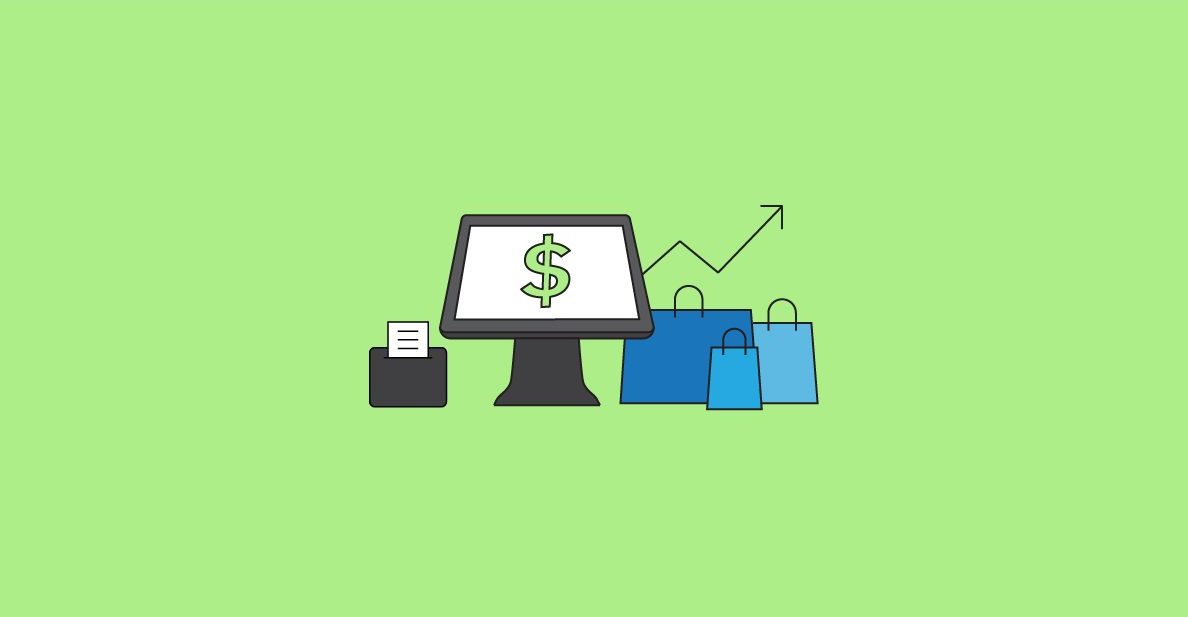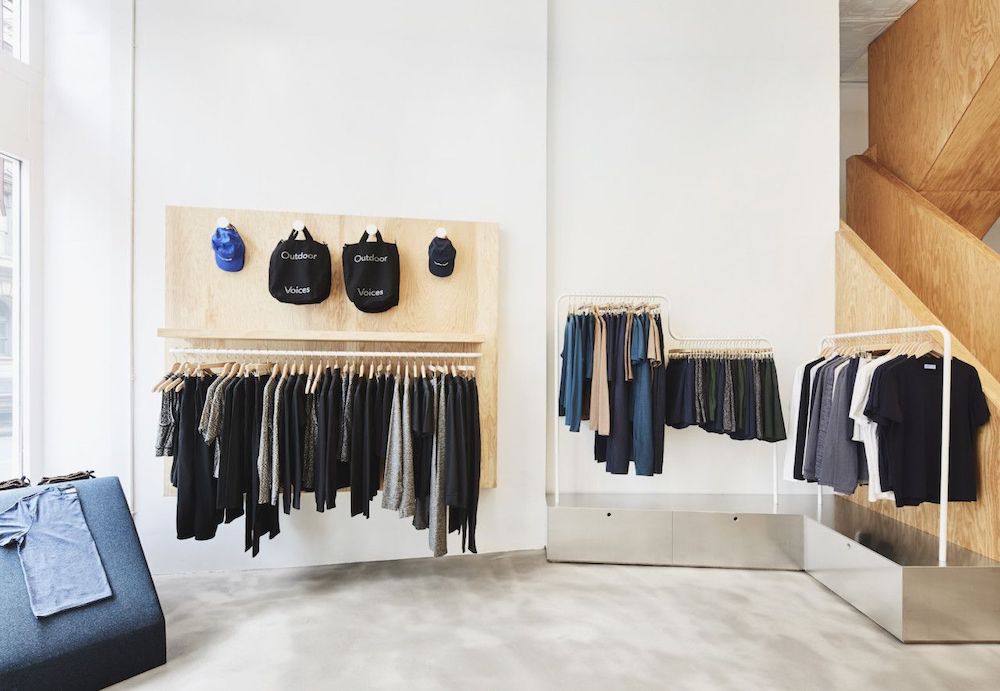
Raise your hand if you’d like to improve your retail store’s sales.
Whether you’re looking to build on the positive momentum or trying to fix a dip in sales, you’re in the right place.
We reached out to retail experts to curate a list of tried-and-true things they’ve done that had a measurable impact on their sales.
Let’s dive in!
- Focus on the customer service
- Prioritize your customers
- Turn your store into a destination
- Invest in your point of sale marketing
- Refresh your in-store displays
- Reduce wait times
- Generate more online awareness
- Increase in-store foot traffic
- Set up a customer loyalty program
- Level up your staff training
- Focus on upsells and cross-sells
1. Focus on the customer experience
Your employees are your store’s front line. They’re the ones interacting with customers, creating positive connections and actually selling your products, so it makes sense to invest in them.
To get your staff to effectively drive in-store sales, it’s important to:
- Hire passionate people: When a sales associate is passionate for the products they sell, it seeps into how they interact with customers and makes them more likely to create positive interactions.
- Focus on the customer’s needs: While sales are certainly important, actively listening to customers is even more so. By listening to what the customer says, sales associates can identify their pain points and better find a way to solve them through the products they sell.
- Emphasize the importance of personalized interactions: There’s no cookie-cutter way to work in sales. Actively listening to a customer’s wants and needs helps a sales associate find the product that’s right for them.
Roberta Perry, Founder of ScrubzBody skincare products, decided to open a retail store to have a touchpoint where she could engage with her customers directly and help them solve their problems.
For her, offering great customer service that simply can’t be replicated online is the key to more lifelong retail customers (and sales).
“We treat our customers so well that they bring friends and families. We host in-store events like Ladies Nights, which brings in groups of 6-18 in one shot. We believe that being genuine and truly caring about their buying and using experience is key. We want them to get the right product, instead of just selling them what we think they need,” she says.
Roberta hit the nail on the head: make your customers your top priority. Which brings us to the next point…
2. Prioritize your customers
Being customer-centric is something that every retailer should aspire to be. It really comes down to understanding what your customers want and making their needs your top priority.
That doesn’t just end at having the products they want in stock. It starts by making customers feel good.
If your sales associates treat the people that walk into your store like people, you’re heading in the right direction. Nobody likes being sold to, so enough with the pressure sales tactics. Just have a conversation with the customer, find out what they need and propose a few solutions that match their price point. If they like your service (and the product), they’ll come back.
If you don’t carry the product that your customer truly needs, don’t be afraid to recommend it to them anyway and tell them where they can buy it. They’ll appreciate the help and your sales associate will establish trust with the customer. When that customer comes back to your store, they’re far more likely to trust your sales associates as a result. Think long-term relationship-building, not short-term sales!
The most successful retailers are obsessed with their customers and making them happy. Are you?
3. Turn your store into a destination
Carlos Castelán, Managing Director of retail consulting firm The Navio Group, also stresses the importance of having an imaginative in-store experience. “Customers crave unique, creative and memorable in-store experiences.”
Not only does that include approachable, knowledgeable staff (that’s a given), it also means rethinking the way your store operates. People are so accustomed to the typical store setup: there are products, salespeople and a cash register—boring.
Companies like Glossier and Casper have pioneered a new store format: it’s called experiential retail.
In a nutshell, what that means is that the store’s goal is more than just to sell products; it’s to create an immersive experience that focuses on customer engagement.
How do they achieve that? With interactive product demos and fun activities that are related to the products they sell.
For example, Casper’s New York store has nap pods that people can rent for a 30-minute nap. They come fully-equipped with a Casper mattress, sheets, and pillows, along with a bathroom to freshen up after your nap. If people enjoyed their nap, their perception of Casper’s products is positive and the probability that they buy Casper products and become brand evangelists is higher.
There’s science to back this up, too. When a person touches and interacts with a product, they’re more likely to develop an affinity for that product.
In an article published by Harvard Business Review, Lawrence Williams, a marketing professor at Leeds School of Business, says “Physically holding products can create a sense of psychological ownership, driving must-have purchase decisions. This idea may underlie the push to move inventory from display cases into customers’ hands, a trend seen in many electronics outlets such as the Apple Store.” Pretty cool, huh?
Experiential retail is blowing up and there are tons of ways you can apply the concept in your store. We teamed up with Cate Trotter, Founder of Insider Trends, to cover this topic in-depth—read her piece below!
Related Read:
4. Invest in your point of purchase marketing
Point-of-purchase marketing is when you place low-investment products near your cash register (where customers complete their transactions). This is meant to incentivize impulse purchases of products that aren’t expensive.
Unlike the products on your sales floor, customers only take a couple of seconds to decide whether or not they want to buy a point-of-purchase product. If you sell low-investment products (like shoe cleaners, gift cards or accessories) consider placing them near your point of sale.
5. Refresh your in-store merchandising
Assembling persuasive in-store merchandising is part art, part data.
You use data to pinpoint which products are typically bought together, and you use your creativity to make those products look irresistible.
Let’s take a look at the approach Outdoor Voices took for their in-store merchandising.
- There’s no clutter.The only things that your eyes are drawn to are their products. Displays that are too busy will just overwhelm your customers and make your store look cluttered and unkempt.
- It’s organized. Every product has its place. It’s easy for customers to find what they’re looking for faster, which contributes to a better overall shopping experience.
- Related products are grouped together. Notice that pants and shirts from matching color palettes are next to one another. (hint, if you want to see which of your products are typically bought together using Lightspeed Analytics, just check out your Commonly Bought Together report.
- Must-have, low-cost accessories are nearby. Odds are, if you’re buying stylish gym gear, you need a bag to carry it in, right? Outdoor Voices probably placed their tote bags next to their gym gear for exactly that reason.

6. Reduce wait times
Long wait times to pay are a big turn-off for customers and can cripple your sales.
Research from Irisys found that Americans will typically abandon a checkout line and leave a store after waiting eight minutes, while British shoppers wait just six minutes before heading for the door.
The best way to stop losing sales due to long checkout lineups? Eliminate them altogether.
Barbara Thau, a contributing writer for Forbes, suggests that brick-and-mortar retailers need to “banish the wait in line, once and for all” to avoid losing sales.
But how do you do that?
It starts with scheduling enough sales associates to serve customers quickly even during peak hours. In Lightspeed Analytics, you can easily see when your peak business hours are in the Sales by Hour of Day report. Use that information to make sure you schedule enough workers to assure you’re promptly serving each customer.
Next, why not eliminate cash registers altogether?
Unlike traditional cash registers and on-premise point of sale (POS) systems, cloud-based POS systems enable sales associates to serve customers and ring up sales from anywhere in the store. This helps customers get in and out of your store as fast as possible, which is what most of them want anyway.
With Lightspeed’s cloud-based POS, you can eliminate customer wait times, all while offering amazing service.Ring up sales from anywhere
7. Generate more online awareness
Clicks and bricks isn’t just a catchy line; it’s literally how consumers shop now.
In 2018, 40% of retail purchases were made by first using online search. Increasingly, people are researching what to buy and where to buy it online before ever setting foot in-store. When they get to the store, those multichannel shoppers spend an average of three times more than single-channel shoppers.
Of course, retailers should have an online presence, but that doesn’t just mean having a transactional website. Things line a Google My Business (GMB) profile, Facebook and Instagram are amazing tools to get discovered by more potential customers in your area.
With a little bit of work, you can make it easier for people to find your store online, research what products you offer and get directions. Your goal is to make it as easy as possible for customers to see that you have what they need.
Setting up a GMB profile and optimizing your Facebook and Instagram accounts for local online searches isn’t as hard as you may think. We wrote a step-by-step guide on how to get your business found by more local customers online—check it out to get started!
Related read:
8. Increase in-store foot traffic
What good is online awareness if nobody is actually visiting your brick-and-mortar store or buying online?
It’s not worth very much.
Part of that is getting a transactional eCommerce store up and running; the other part is showing customers that your brick-and-mortar store has what customers are looking for.
There are several ways to incentivize customers who discover your store online to visit and make a purchase.
- Organize in-store events. The benefit? If a customer is interested, they have to visit your store. Things like weekly clubs, workshops and hands-on events are a great way to build a community and generate more visits.
- Run exclusive in-store offers. Nobody likes passing up a great deal. Try offering a free giveaway for in-store purchases, or featuring certain items available exclusively in-store.
- Show inventory levels online. People are more likely to visit your store if they know you have what they’re looking for. With Lightspeed eCom, you can show your brick-and-mortar inventory levels online in real-time by just turning on the Show Stock option.
- Offer free in-store pickup. This option benefits both you and your customers. For them, they can avoid paying for shipping, while you save on shipping costs.
This is a pretty big topic to unbox in a few paragraphs (actually, it’s impossible to do it justice), which is why we write an entire blog on the topic. Check it out below!
Related read:
9. Set up a loyalty program
A loyalty program incentivizes customers to purchase more to unlock personalized rewards. It’s a super accessible way to increase customer lifetime value while rewarding your customer’s loyalty to your business. When customers can use their loyalty program points to discount future purchases, you can bet they’re going to take advantage.
10. Don’t treat product returns like a loss
Returns happen, and when they do, customers should get the same great service as when they bought the item.
Put yourself in their shoes. The product didn’t work out; they’re disappointed, too.
Treat each return like a sale and serve them willingly and with a smile. It makes the customer feel like they’re valued for more than just their hard-earned money, which creates an emotional sense of loyalty.
If they appreciate your service, they’re more likely to make another purchase at your store. Make the process quick and painless, and most important of all: treat your customers with positive intent.
Of course, there are serial-returners out there who will try to take advantage, but a loyal customer base that consistently shops at your store because of great service more than makes up for that minority.
11. Focus on upsells and cross-sells
Upsells and cross-sales can add up; have you considered making them a part of your sales strategy? When done wrong, it can make your sales associates (and your store’s reputation) look sleazy and self-serving.
But when done right, it’s just flat-out great customer service.
With upselling, you should train sales associates to use the rule of three. Take the item that the customer was initially interested in (for example, a pair of running shoes) and showing the customer three different models at three different price points (entry-level, mid-level and high-end).
This is the best way to upsell since it shows the customer that you understand their needs. You want to show them everything that’s available so that they can make the most informed decision possible. You’re not pressuring them; you’re informing them.
With cross-selling, you should apply a similar approach: don’t try and sell a customer something they don’t actually need.
If we go back to the shoe example, an example of an authentic cross-sell would be educating them on the various types of running socks: from expensive compression socks and moisture-wicking ones to the generic cotton socks. Educate them on the differences between the three and let them choose what’s best for them.
With cross-selling, another important factor is “does this purchase make sense?” For shoes, socks are pretty much a given, but sometimes it can be tricky. The best way to find out if a customer needs anything else is to simply ask “can I help you with anything else today?”.
Remember, a sales associate’s job is to facilitate the customer’s needs and offer solutions. Suggestive selling is the most authentic way to do that without coming across as an overly-pushy, selfish salesperson.
Wrapping up
Hopefully can find some tips and tricks above and use them to increase retail sales. Ultimately, it comes down to prioritizing your customers and understanding that you’re in the business of serving them.
From your staff to the systems you use to run your store, everything and everyone’s job should be to create more “wow” moments and earn their trust; the sales will naturally follow.
Want to create an efficient in-store experience that your customers will love? Talk to one of our retail experts today to see how Lightspeed can help!

News you care about. Tips you can use.
Everything your business needs to grow, delivered straight to your inbox.


